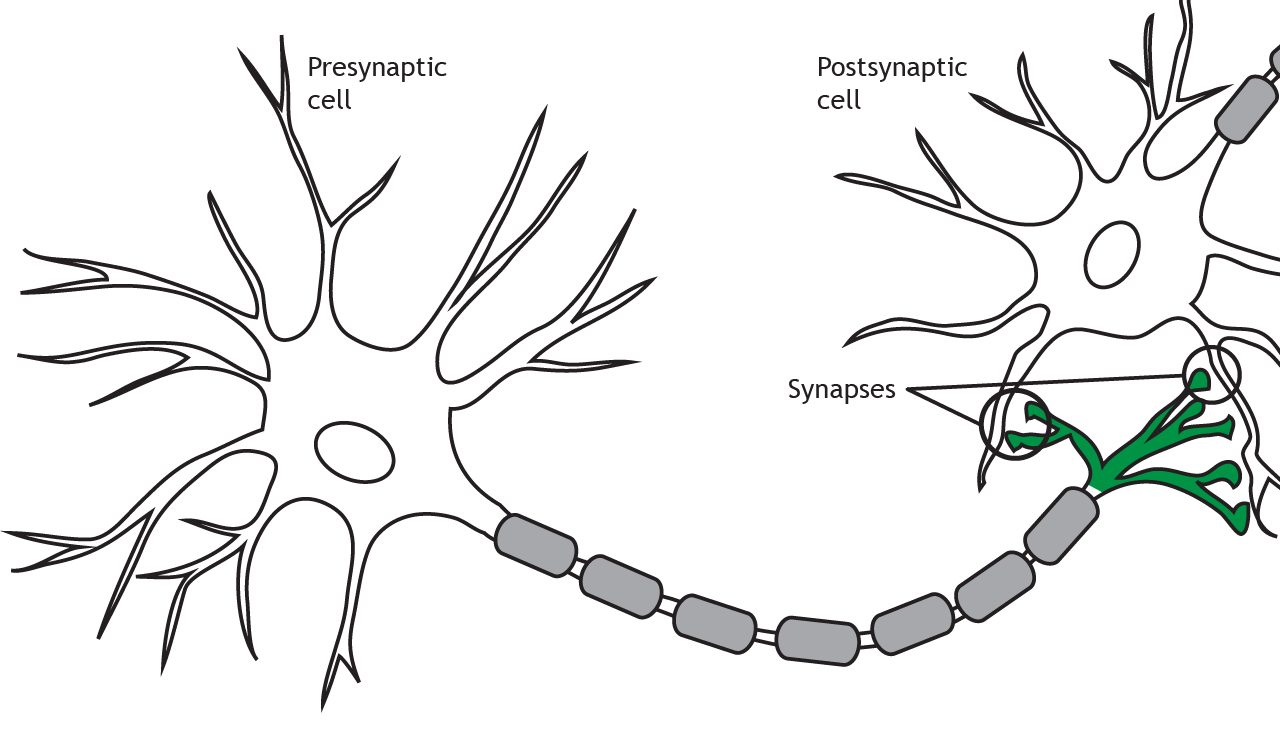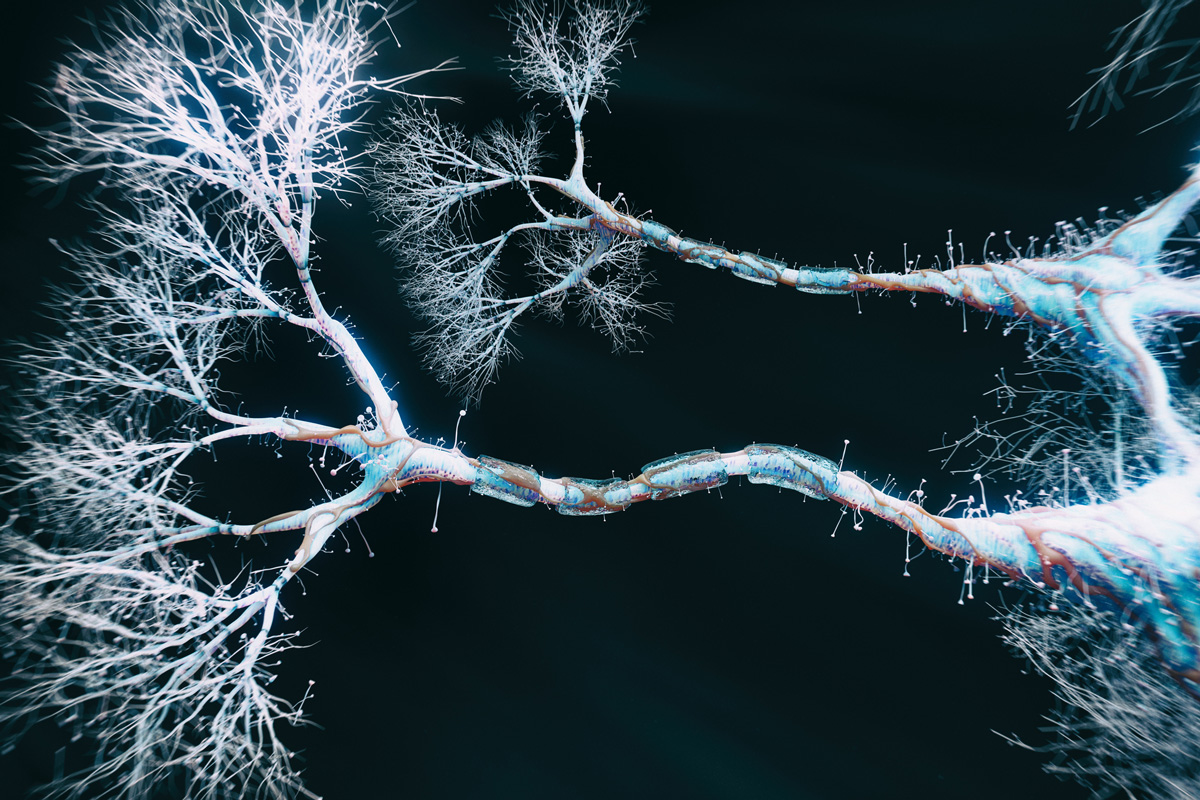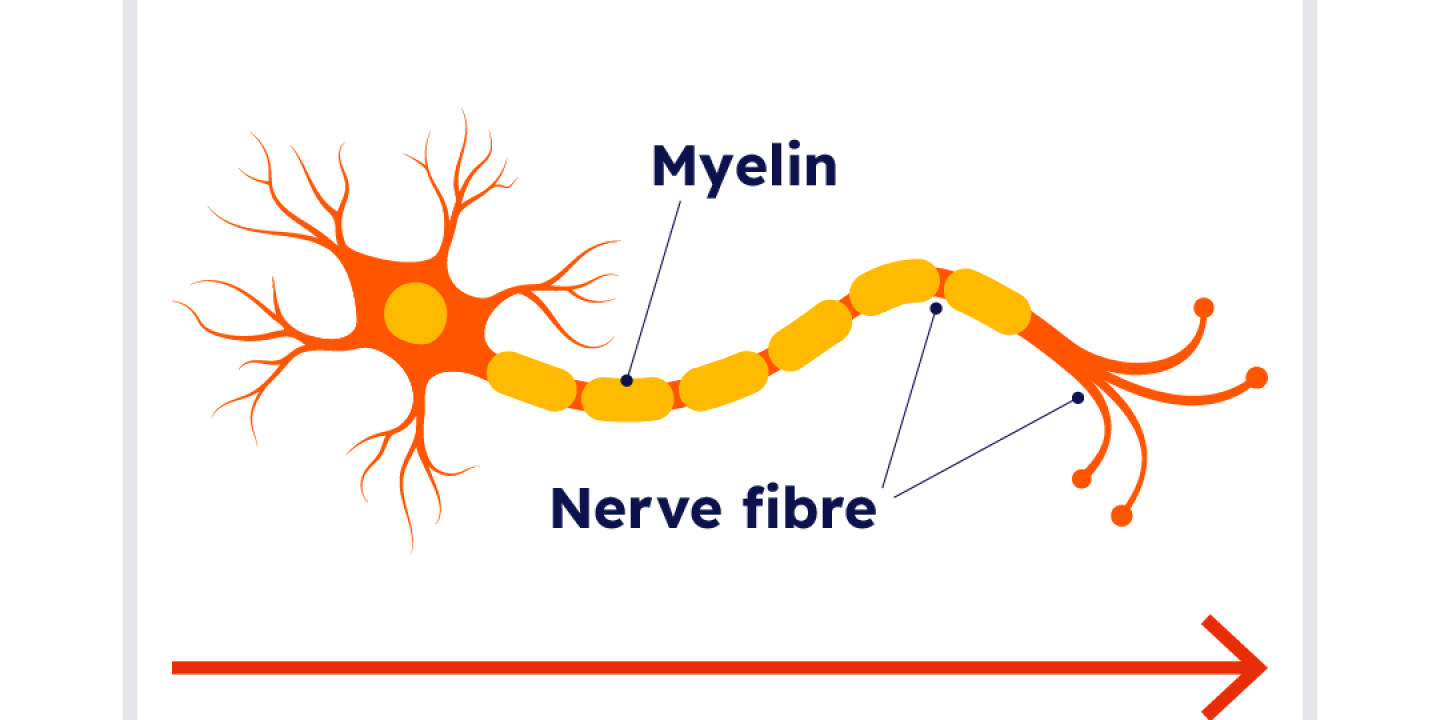AP Psych Ch 3 Vocab
1/72
There's no tags or description
Looks like no tags are added yet.
Name | Mastery | Learn | Test | Matching | Spaced |
|---|
No study sessions yet.
73 Terms
Biological Psychology
the scientific study of the links between biological and psychological processes
Neuron
a nere cell; the basic building block of the nervous system

dentrites
a neuron’s bushy branching extension that receives messages and conducts impulses toward the cell body (Like alien fingers)

Axon
The neuron extension that passes messages through its branches to other neurons or to muscles or glands
Myelin Sheath
a fatty tissue layer sentimentally encasing the axons of some neurons; enables vastly greater transmission speed as neural impulses hop from one node to the next (speed boosters)

Action potential
a neural impulse; a brief electrical charge that travels down the axion (toilet flush)
refractory period
a period of inactivity after neuron has fired
threshold
the level of stimulation required to trigger a neural impulse (toilet flush)
All-or-Nothing response
a neuron’s reaction of either firing or not firing
Synapse
The junction between the axon tip of the sending neuron and the dendrite or cell body receiving the neuron
Neurotransmitters
chemical messengers that cross the synaptic gaps between neurons. When released by the sending neuron, neurotransmitters travel across the synapse and bind to receptor sites on the receiving neuron, thereby influencing whether that neuron will generate a neural impulse
Reuptake
a neurotransmitter’s re absorption by sending neuron
Endorphins
Natural, opiate-like neurotransmitters linked to pain control and to pleasure (from running)
agonist
a molecule that by binding to a receptor site, stimulates a response
antagonist
a molecule that, by binding to a receptor site, inhibits or blocks a response
Nervous System
The body’s speedy, electrochemical communication network
Central Nervous System
The brain and spinal chord
peripheral nervous system
the sensory and motor neurons that connect the central nervous system to the rest of the body
nerves
bundled axons that form neural “cables” connecting the central nervous system with muscles, glands, and sense organs
sensory (afferent) neurons
neurons that carry incoming information from the sensory receptors to the brain and spinal chord
motor (efferent) neurons
neurons that carry outgoing information from the brain and spinal cord to muscles and glands
interneurons
neurons within the brain and spinal chord that communicate internally and intervene between the sensory inputs and motor inputs
somatic nervous system
the division of the peripheral nervous system that controls the body’s skeletal muscles
Autonomic nervous system
the part of the peripheral nervous system that controls the glands and the muscles f the internal organs. Sympathetic arouses, parasympathetic calms
Reflex
a simple, automatic response to a sensory stimulus (Like a knee-jerk)
Endocrine system
the body’s slow chemical communication system
hormones
chemical messengers that are manufactured by the endocrine system
adrenal glands
a pair of endocrine glands that sit just above the kidneys and secrete hormones that help arouse the body in times of stress
pituitary gland
the endocrine system’s most influential gland. Under the influence of the hypothalamus, the pituitary regulates growth and controls other endocrine glands
lesion
tissue destruction (commonly when people might cut into a brain)
Electroencephalogram (EEG)
An amplified recording of electrical activity sweeping across the brain’s surface
CT Scan
a series of x-rays taken from different angles and combined by computer into a composite representation of a slice of the brain’s structure
PET Scan
a visual display of brain activity that detects where a radioactive form of glucose goes whilst the brain performs a given task
MRI
A technique that uses magnetic fields as radio waves to produce computer generated images of soft tissue
fMRI
a technique for revealing bloodflow ad therefore brain activity by comparing successive MRI scans
Brainstem
the oldest part and central core of the brain, beginning where the spinal cord swells as it enters the skull
Medulla
the base of the brainstem; controls heartbeat and breathing
thalamus
the brains sensory control center, located on the top of the brainstem
reticular formation
a nerve network that ravels through the brainstem and thalamus and pays an important role in controlling arousal
cerebellum
the “little brain” at the rear of the brainstem. Functions include processing sensory information, coordinating movements, and enabling nonverbal learning
limbic system
neural system located below the cerebral system associated with emotions and drive
Amygdala
two lima-bean-sized neural clusters in the limbic system; linked to emotions
Hypothalamus
a neural structure lying below the thalamus; directs several maintenance activities, govern endocrine system, linked to emotion and reward. (hypo the llamas)
Cerebral Cortex
the intricate fabric of connecting neural cells covering the cerebral hemispheres-control and processing center (Network system)
glial cells
cells in the nervous system that support, nourish, and protect neurons-learning and thinking
frontal lobe
portion of the cerebral cortex lying just behind the foread; involved with speaking, muscle movements, and plans
parietal lobes
portion of the cerebral cortex at the top of the head and toward the rear; receiving sensory input from touch & body
occipital lobes
portion of the cerebral cortex lying at the back of the head; includes areas that receive info from the visual field
temporal lobe
portion of the cerebral cortex lying around ears; for receiving auditory
motor cortex
an area at the rear of the fronal lobes that controls voluntary movements
somatosensory cortex
area at the front of the parietal lobe that registers touch and movement
Association areas
areas of the cerbral cortex that are not involved with primary motor or sensory functions; rather, they are involved in higher mental functions
plasticity
brain’s ability to change by reorganizing after damage or building new pathways
neurogenesis
formation of new neurons
corpus callostum
the large bond of neural fibers connecting the two brain hemispheres and carrying messages between them
split brain
a condition resulting from surgery that isolates the brain’s two hemispheres by cutting the fibers connecting them
conciousness
awareness of ourselves and the environment
cognitive neuroscience
the study of the brain and activity linked with cognition
dual processing
the principle that information is often simultaneously processed on separate conscious and unconscious pathways
behavior genetics
the study of the relative power and limits of genetic and environmental influences on behavior
environment
every external influence, from prenatal nutrition to the people and things around you
chromosomes
threadlike structures made up of dna molecules that contain the genes
dna
a complex molecule containing the genetic info that makes up the chromosome
genes
the biochemical units of heredity that make up the chromosomes
identical twins
twins that develop from a single egg
fraternal twins
twins who develop from separate fertilized eggs
molecular genetics
the subfield of biology that studies the molecular structure and function of genes
heritability
the proportion of variation among individuals that we can attribute to genes
interaction
the interplay that occurs when the effect of one factor depends on another factor
epigenetics
the study of environmental influences on gene expression that occurs without DNA change
evolutionary psychology
the study of the evolution of behaviors and the mild
natural selection
survival of the best traits
mutation
a random error in gene replication that leads to a change